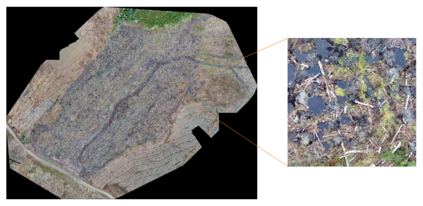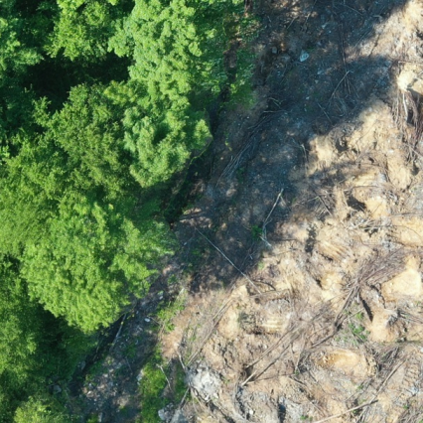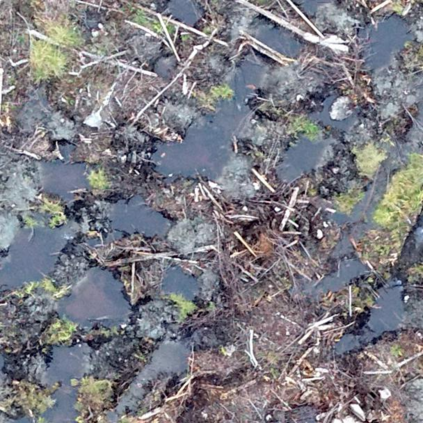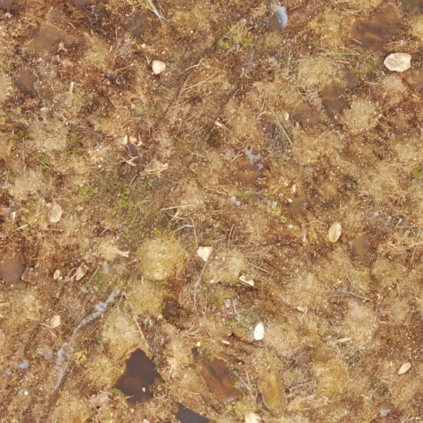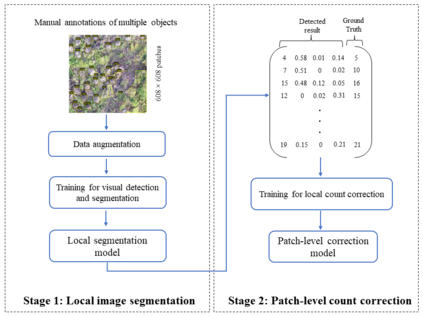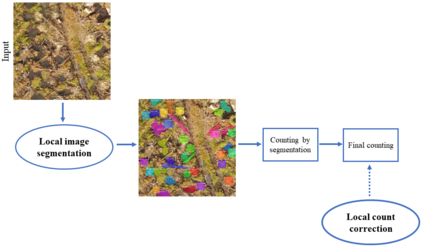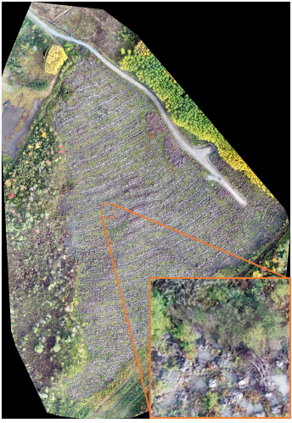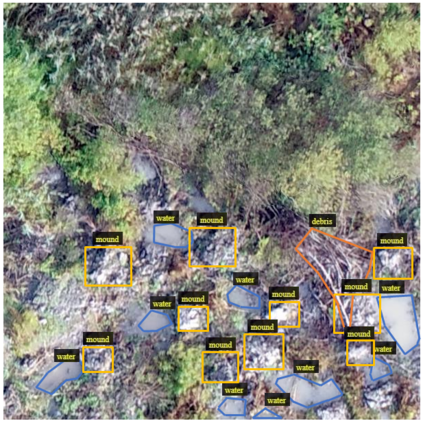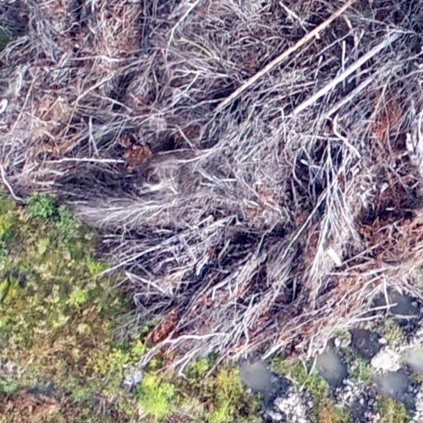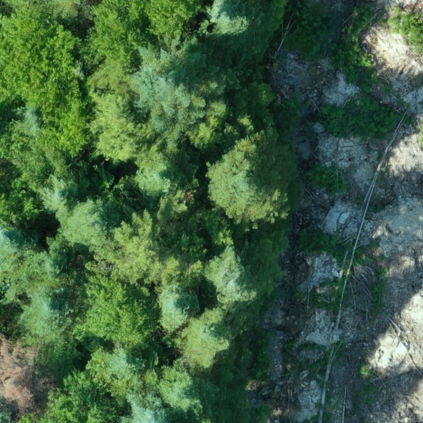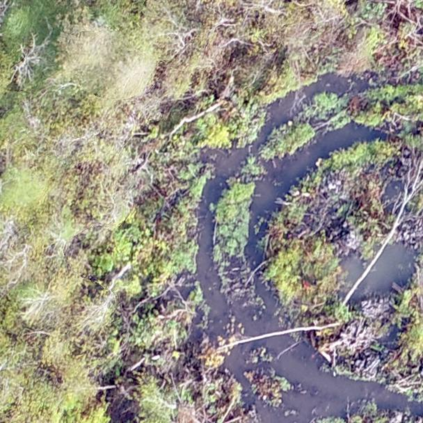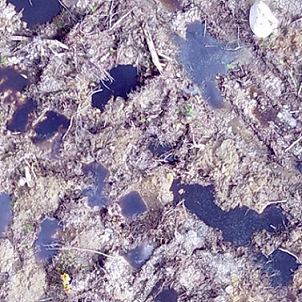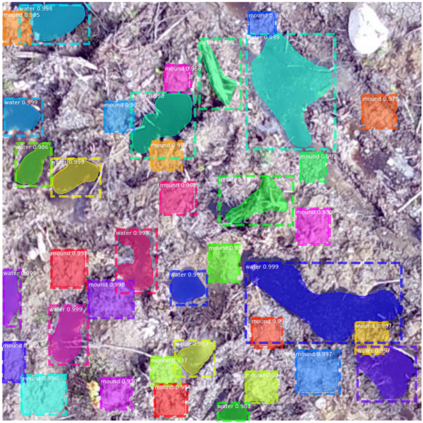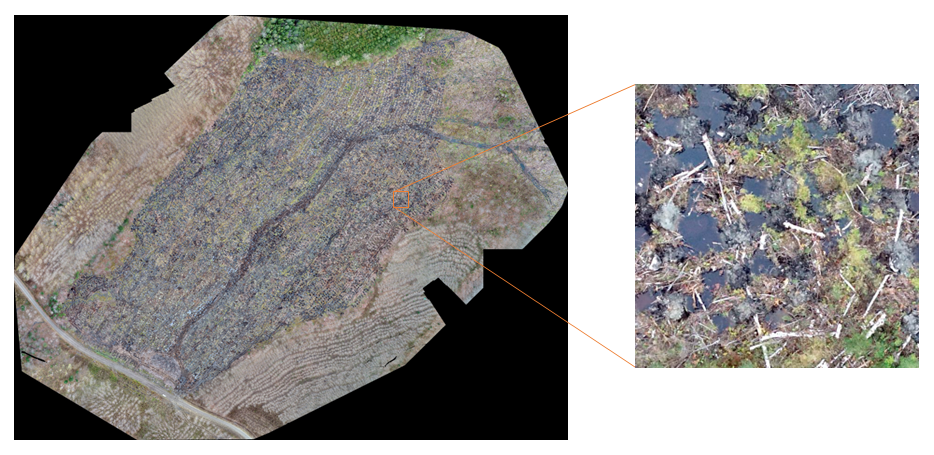Site preparation by mounding is a commonly used silvicultural treatment that improves tree growth conditions by mechanically creating planting microsites called mounds. Following site preparation, the next critical step is to count the number of mounds, which provides forest managers with a precise estimate of the number of seedlings required for a given plantation block. Counting the number of mounds is generally conducted through manual field surveys by forestry workers, which is costly and prone to errors, especially for large areas. To address this issue, we present a novel framework exploiting advances in Unmanned Aerial Vehicle (UAV) imaging and computer vision to accurately estimate the number of mounds on a planting block. The proposed framework comprises two main components. First, we exploit a visual recognition method based on a deep learning algorithm for multiple object detection by pixel-based segmentation. This enables a preliminary count of visible mounds, as well as other frequently seen objects (e.g. trees, debris, accumulation of water), to be used to characterize the planting block. Second, since visual recognition could limited by several perturbation factors (e.g. mound erosion, occlusion), we employ a machine learning estimation function that predicts the final number of mounds based on the local block properties extracted in the first stage. We evaluate the proposed framework on a new UAV dataset representing numerous planting blocks with varying features. The proposed method outperformed manual counting methods in terms of relative counting precision, indicating that it has the potential to be advantageous and efficient in difficult situations.
翻译:铺设工地是常用的造林处理方法,它通过机械制造称为土丘的植树微型矿址来改善树木生长条件。在铺设工地后,下一个关键步骤是计算土丘的数量,为森林管理人员提供对某个种植园区块所需树苗数量的精确估计。计算土丘的数量一般是通过林业工人手工实地调查进行的,这种调查费用高昂,容易出错,特别是大面积地区。为解决这一问题,我们提出了一个新框架,利用无人驾驶航空飞行器(UAV)成像和计算机的视觉状况来精确估计种植区块的成熟地块数量。拟议框架由两个主要部分组成。首先,我们利用基于深入学习算法的目辨识方法,通过像素分解多种探测多个对象。这可以初步计算可见的土丘,以及经常看到的其他物体(例如树木、废弃物、水的积累),用来描述种植区块的特征。第二,由于视觉识别可能受到若干个不成熟的建筑区块特性因素的制约(例如:我们从建筑区块的相对值角度来预测机体侵蚀,我们用机体积的缩图解法在最后阶段中选择了一种变缩的方法。

